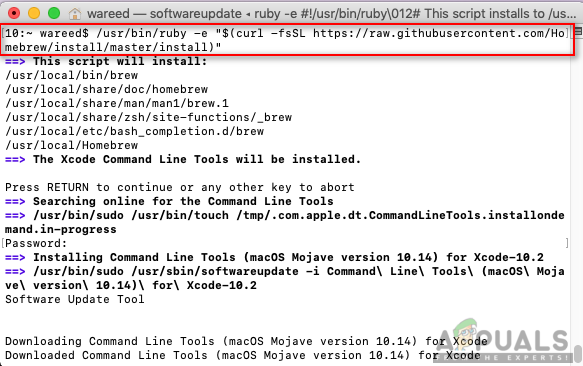I am going to share with you step by step process about how to uninstall Node JS and Node Package Manager(NPM) from MacOS. I will use MacOS terminal to uninstall Node JS and NPM completely.
Airport – the Little Known Command Line Wireless Utility for Mac. Hidden from the casual Mac user is a spiffy command line utility that allows you to view, configure, and troubleshoot your Mac’s wireless connection, entirely from the Terminal of MacOS and Mac OS X. This command has a help file but is otherwise but not much documentation. Due to recent Mac catalina update, by default terminal uses zsh. Zsh does not use.bashprofile. It uses /.zshrc file. Open up this file and add source /.bashprofile. Restart Terminal and it should work. Make sure your /.bashprofile file does not have source /.bashprofile line. . If your Mac is using macOS Sierra or earlier, include the -applicationpath argument and installer path, similar to the way this is done in the command for El Capitan. After typing the command: Press Return to enter the command. When prompted, type your administrator password and press Return again.
Follow the Step by Step Process to Uninstall Node Js from MacOS.
Go to MacOS Terminal
You can check out the Node installation in mac by using the below command. It will show node js version installed in your device.
Open the terminal and enter the given below command to know your current directory.
Go to your root directory.
Then enter into the usr directory by using following command.
Go to locale directory.
Enter into include folder by using given below command.
Now if you enter the ls command then you’ll see thenode folder inside the include folder like given below.
We have to remove this node folder to completely uninstall the Node js from MacOS.
Remove node_modules from MacOS
In next step we have to completely remove node_modules from our system.
Follow the steps
Enter the below command to go back to previous folder.
Go to lib directory, hit the below command to enter into the lib directory.
Use the below command to remove the node_modules (NPM) folder.

Enter the below command to come out from the directory.
Go to bin folder using below command.
Here you also have to delete the node folder to uninstall the Node js completely.

Enter the below command to remove the Node js from MacOS.
Finally, we’ve successfully uninstalled the Node JS from MacOS, use the given below command to check whether the Node and NPM completely removed from our system.
We have completed our task if you are getting below output.
Quick Links
Have you tried to use Telnet on MacOS only to find out it wasn’t there?You’re not alone, many have been disappointed to find out that Telnet hasbeen removed from modern versions of the system software starting fromMacOS Mojave and newer. These instructions will work for MacOS Mojave andnewer, I happen to be running Big Sur and this is what I did to get Telnetback.
Installing Telnet on MacOS with Homebrew
First I would like to mention that there is an easier route, that is usingHomebrew. I see a lot about it and many people seem happy with it but I havean aversion to putting it on my machine. If you don’t already have Homebrewon your machine, navigate over to the brew website and followthe installation instructions. I would caution against following themexactly though for security purposes. I would do it like this instead:
Open and inspect the install.sh script to see what it does and make sure you feelcomfortable running it on your machine. And then run it.
After installing Homebrew, install Telnet
Installing Telnet on MacOS by Building Telnet from Source
This was the method I used. There are some prerequisite steps though, if youdon’t already have them you’ll need to install the MacOS command line tools.
Step 1: Installing the command line tools
Sudo Command Not Found Mac Catalina Free
Open a terminal and enter the following line, you’ll then be shown a pop upprompt.

Click install when the prompt pops up.
After that you’ll be shown a license which you’ll have to agree to in orderto install.
After that you’ll see the download progress and the install will happenafter that. Unfortunately I forgot to get screen shots of the followingmessage boxes.
Sudo Apt-get Command Not Found Mac Catalina
Step 2: Getting the Telnet source
For this step you’ll be getting the GNU network utilitiesnavigate to the download pageand find the latest source. At the time I’m writing this it’s 1.9.4:
Step 3: Extract the source
Step 4: Configure and build
Now that the source is extracted change into the directory:
Run the configure command:
Run the make command to build:

And then install:
Either way you choose is fairly easy, the build for this is pretty straightforward and was very quick. I don’t think it even took me 10 minutes tobuild and install.